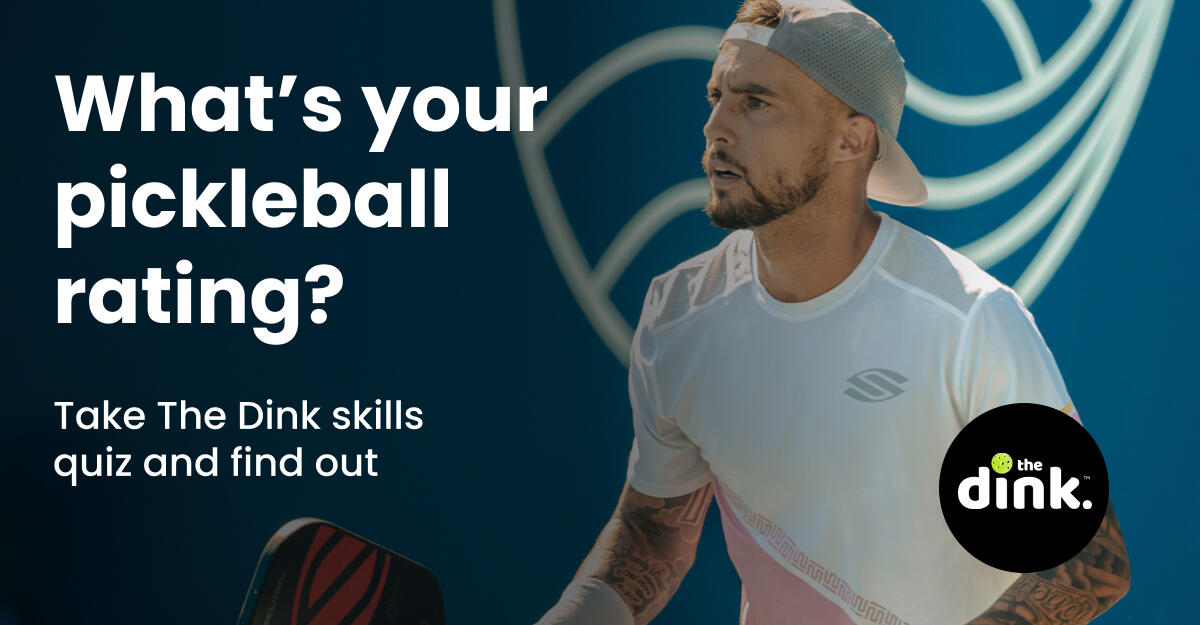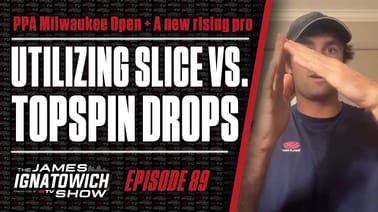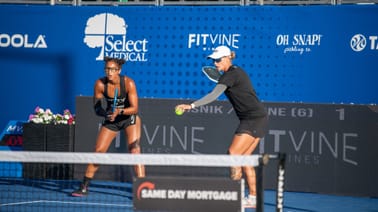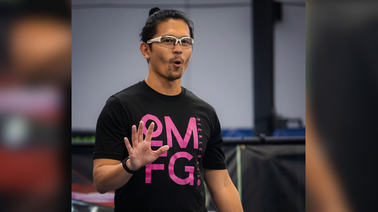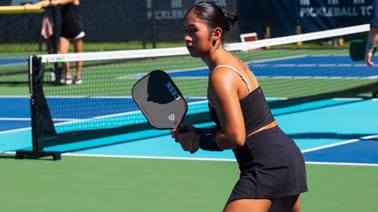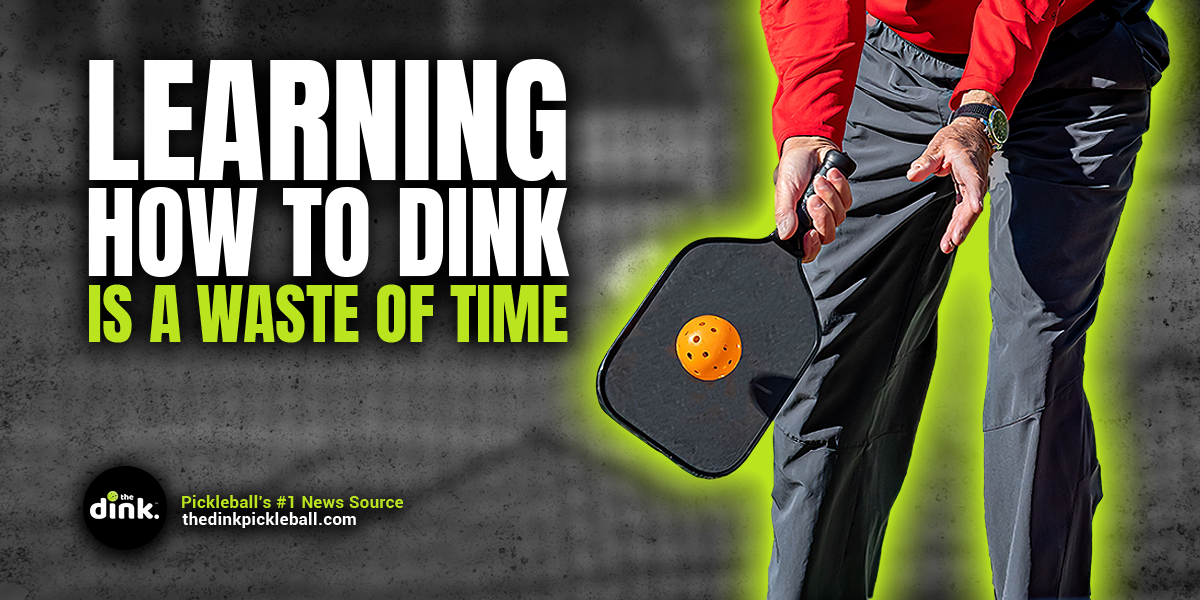
Why Learning How to Dink Early in Your Pickleball Journey is a Waste of Time
Dinking at the lower levels of pickleball is dead.
It doesn't happen. Like ever.
Yet, every day, I see players warming up by hitting dinks and coaches using up an entire hour of clinics forcing students to learn the difference between a push and a roll dink.
It's a waste of time for everyone involved.
The lower the level, the fewer the dinks
I have no stats to back this up, but I'm going to say it anyway – the lower your skill level, the fewer dinks you'll hit each game.
Players drive the ball incessantly because it's easier and it's what they're used to seeing in other racquet/paddle sports. Once the players at your level learn about speedups, then it becomes all about speeding the ball up – even when they shouldn't.
If everyone is hitting hard stuff, why do coaches and players focus so much on the soft game?
The argument I've heard the most is that as you progress, dinking becomes more important – which is true, to a point.
Even at the pro level, long dink rallies are happening less and less thanks to new paddle technologies and just an overall more aggressive style of gameplay.
Dinking until you can't dink anymore has become outdated. It's an old-school mentality, and I think it does nothing to benefit the growth of a player or the game.
What players should learn instead
In my opinion, there are four skills more important than dinks to teach early on:
- How to hit better drives
- How to serve and return better
- How to defend drives
- How to recognize out balls
Let's look a bit at each one.
Learn to hit better drives
Grip it and rip it. That's what every beginning pickleball player thinks makes a good drive. It's hard. It's fast. And it gets over the net, sometimes.
However, this couldn't be further from the truth. Yes, having a good, hard drive is important, but it's actually better (for most people) to hit their drives at 75-80 percent of their power and to focus on placement rather than power.
So many drives from our banger friends would go out of bounds if we just let them and it's because they don't know how to drive the ball properly.
Learn how to hit a great drive from pro pickleball player and coach, John Cincola:
Learn to serve and return better
The serve in pickleball is another hotly debated topic. Some believe that getting it in play 100 percent of the time is the only thing you should focus on. Others have realized that the serve can be a weapon and that developing a great one can set the tone of an entire match.
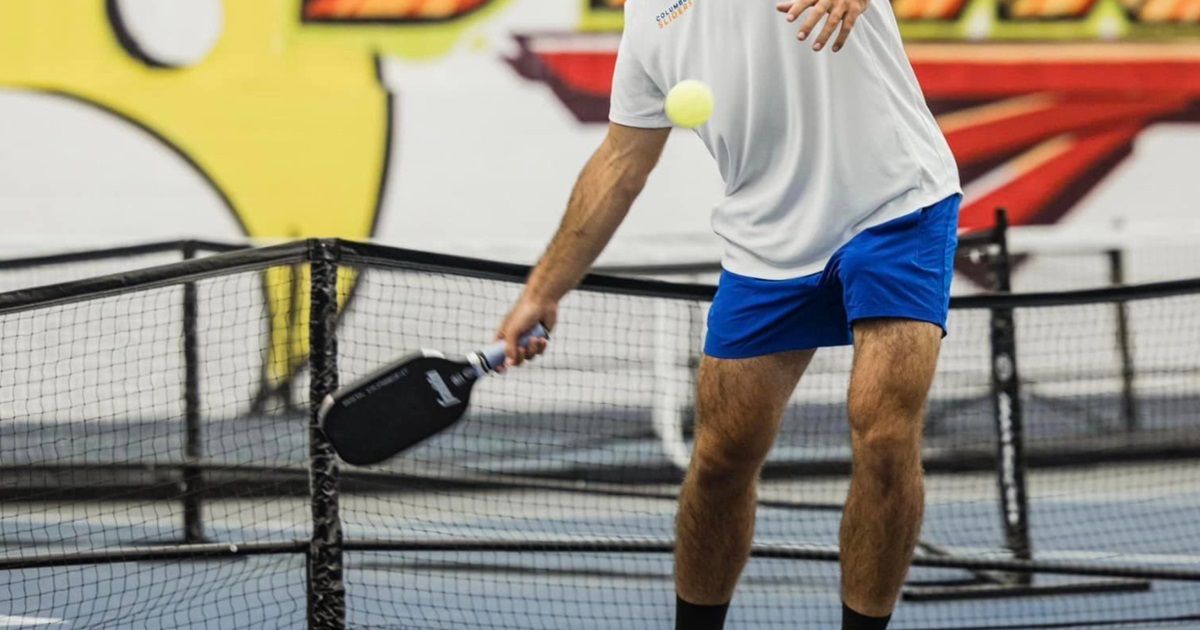
Returns have also changed quite a bit over the last two years. Not long ago, everyone was teaching the slice return. Now, it's considered a big no-no.
Regardless of how you feel about the slice, the main emphasis on your return should be to return it deep, giving you and your partner plenty of time to get into a good position for the next ball.

Learning how to hit effective serves and returns can completely alter your game and instantly make you a formidable pickleball player.
Learning to dink, even if you get really good at it, will not make much of a difference for a while.
Learn to defend drives
I keep saying it, but it's because it's true; here is another area of the game that has transformed, but continues to be taught incorrectly.
Blocking drives from your opponent is no longer the best way to play pickleball.
If you hire a coach and they aren't teaching you how to counter and punish drives, get a new coach. The block is not a weapon; it's a concession.
Don't believe me? Hear it from pickleball pro Zane Navratil:
Learn to recognize out balls
Perhaps the best skill you can develop is not a shot at all. Recognizing out balls is one of the best skills you can develop. Everyone is bad at it. Your goal should be to become less bad.
There are ways to read the ball and your opponent's body language to develop a better sense of when a ball is likely going to go out or stay inside the court. You can learn those skills in just a few sessions of dedicated practice.
Tanner Pickleball has a video dedicated to helping you hone in on recognizing out balls:
Learning to let out balls go out can earn you so many more points in a pickleball match (especially at lower levels) than dinking ever will.
There you have it. My two cents on why learning to dink at lower levels is a waste of time.
Should you eventually learn how to dink and dink well? Absolutely, but not until after you've learned everything mentioned above first.
